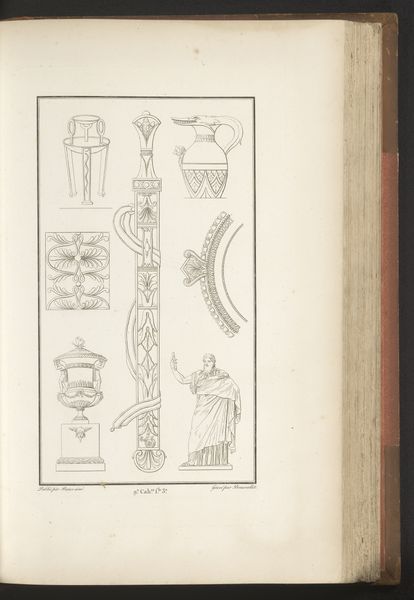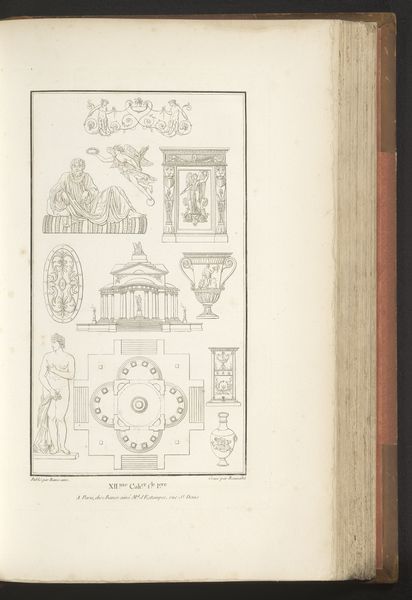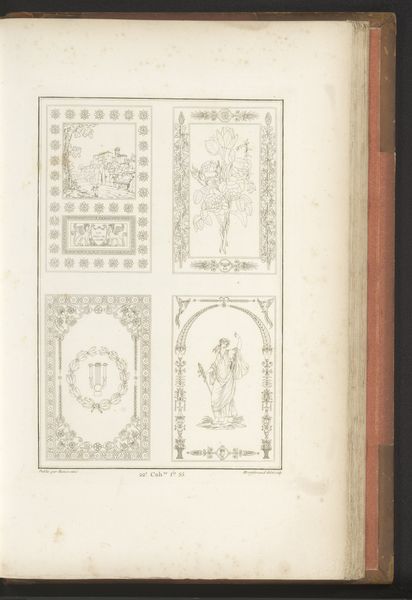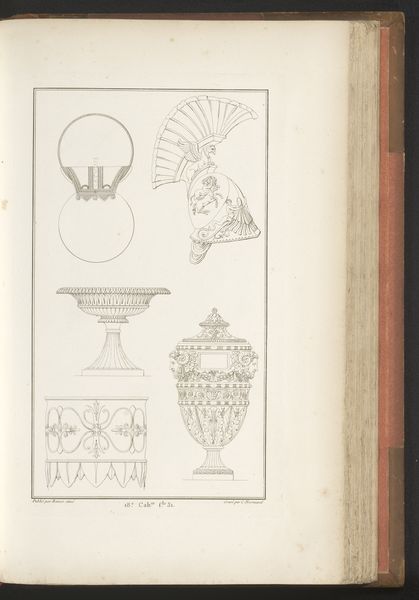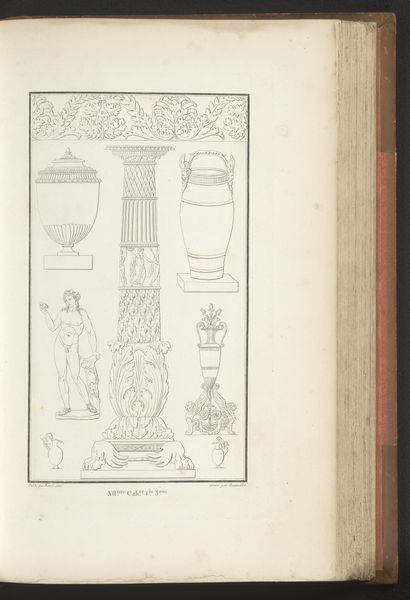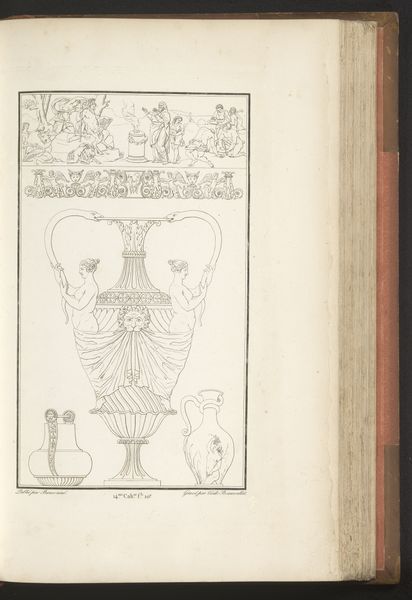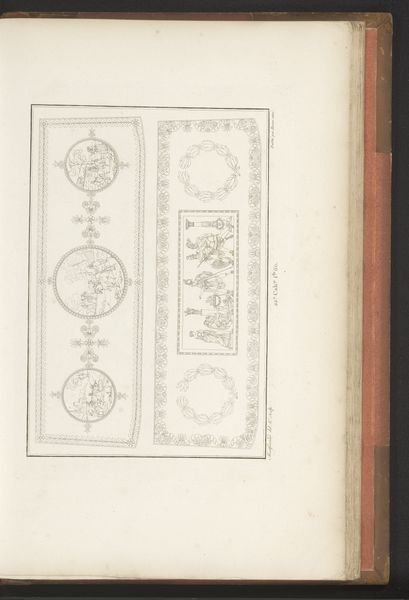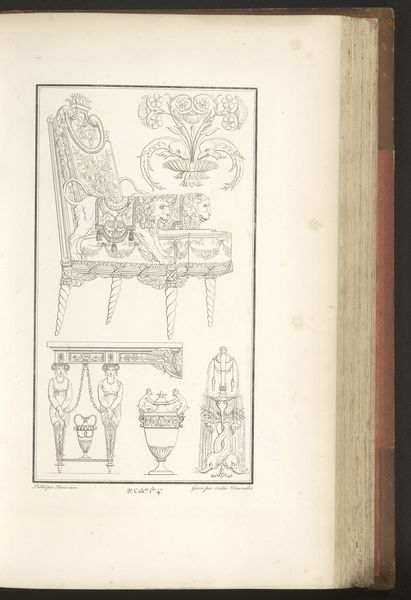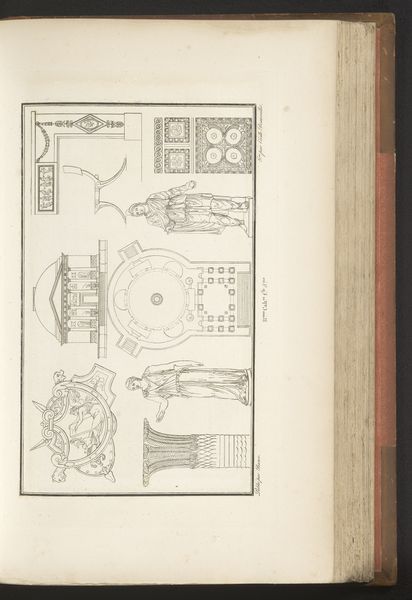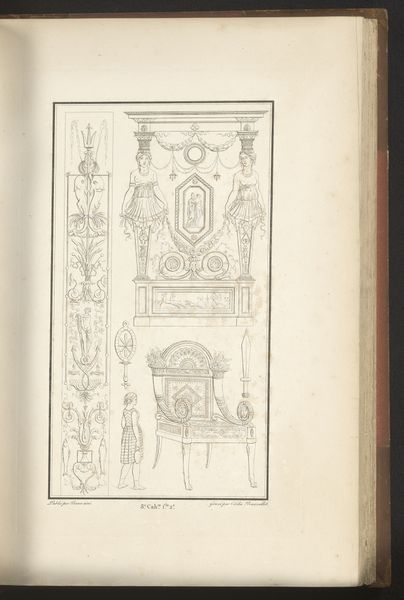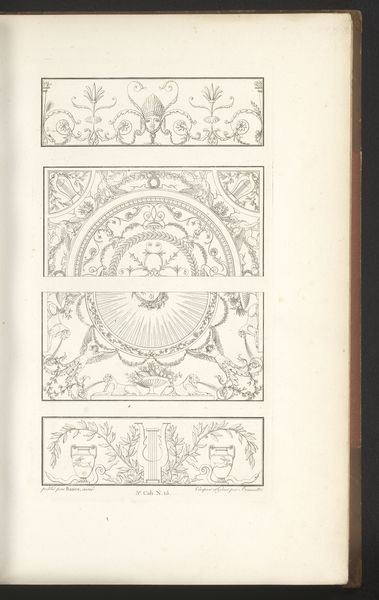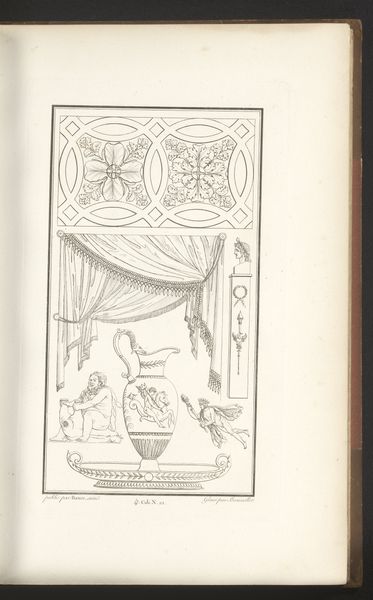
drawing, paper, ink
#
drawing
#
neoclacissism
#
pen sketch
#
paper
#
ink
#
geometric
#
line
#
decorative-art
Dimensions: height mm, width mm
Copyright: Rijks Museum: Open Domain
Curator: Take a look at this lithograph entitled "Diverse ornamenten" dating back to 1820. It is ink on paper by Pierre-Nicolas Beauvallet. What do you think? Editor: The precision is striking. It feels like an architect's blueprint, but with a very ornate sensibility. The composition reminds me of sample plates. Curator: Absolutely. Beauvallet's mastery truly shines here. The various ornamental motifs display recurring themes associated with neoclassicism such as a statue of a Greek goddess and decorative foliage. Editor: Note the means of its production. The deliberate strokes of ink on paper—likely quite costly at the time, implies a luxury in the attention and detail. These aren’t mere doodles; this drawing exemplifies skilled labor reproduced, maybe for broader use by artisans? Curator: I believe so. The imagery channels classical antiquity; a deliberate effort to imbue a sense of historical legitimacy and grandeur. Editor: It's intriguing how neoclassicism attempted to recapture the material culture of Rome and Greece, adapting them into the designs of everyday life for early 19th century consumption. Look at this repeated grapevine ornamentation; such common material was now recontextualized for more privileged markets. Curator: These aren’t exact replicas but artistic interpretations filtered through the 19th-century aesthetic sensibility. The wreath and the urn reference victory, virtue, and civic duty. Beauvallet created something intended not just for surface decoration but symbolic significance. Editor: And those symbols became commodities themselves. This sheet of drawings hints at the engine of material design. It's a template, ready to influence architectural details in an empire's homes. Curator: Precisely. It is an attempt to weave these ancient virtues into the social fabric, by incorporating them as core themes in various functional design applications. Editor: To observe how classical themes get replicated on building façades, furniture, and dinnerware allows a clearer view into this kind of material manipulation across society. Curator: The lithograph is therefore far more than simply a collection of patterns—it is a microcosm of early 19th-century artistic, social, and political aspirations. Editor: Yes, a ledger of both technique and aspiration in the age of industry.
Comments
No comments
Be the first to comment and join the conversation on the ultimate creative platform.
